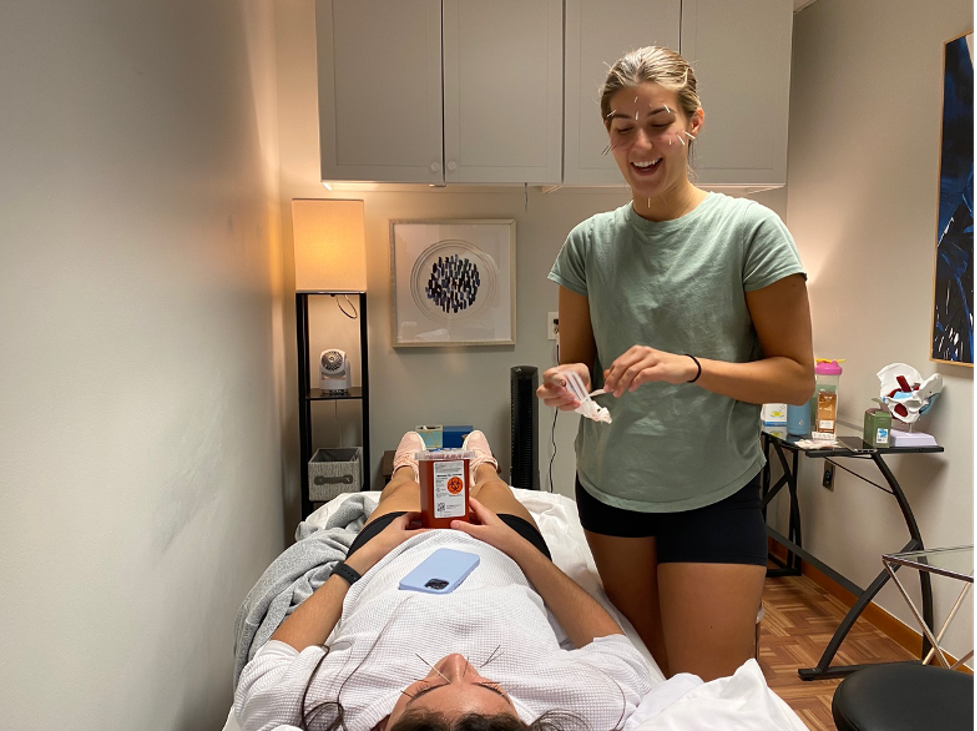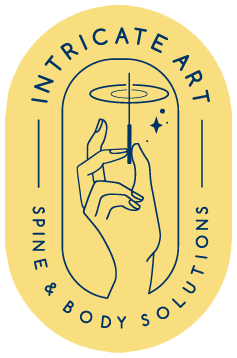
Dry Needling & Electrical Auricular Vagus Nerve Stimulation to Improve Insulin Resistance: A Wonderful, Powerful Treatment
There is hardly any dry needling (DN) research on insulin resistance, however, there is quite a bit of acupuncture research on it, as is the case with most subjects concerning needling. Remember, acupuncture has been around thousands of years longer than DN, literally. Reading acupuncture research is extremely important to open your mind to other treatment thought processes utilizing needles.
I have numerous patients and students of mine who have seen incredibly dramatic improvements in maintaining their blood glucose levels following implementation of electrical auricular vagus nerve stimulation. Targeting the parasympathetic autonomic nervous system (PANS) with needles, the vagus nerve being the primary nerve the PANS, is the most effective method in Physical-Therapy-Land I have seen to regulate insulin resistance. Aside from exercising and staying healthy. But very few do that, unfortunately.
I think these two may have overstimulated to the point of vasovagal response…

Remember, the most powerful area to target the PANS is the concha, cymba concha, and inner tragus of the ears, which are all typically innervated by the auricular branch of the vagus nerve. The second parasympathetic-dominant area is the sacral plexus, S2-S4, and the third area is C2 spinous process or the suboccipital periosteum. Make sure to add low frequency stim. I like 1 Hz because it is closest to a typical heartbeat. This increases the concentration of beta-endorphin released from the hypothalamic-pituitary-adrenal (HPA) axis, the most powerful endogenous opioid we have found, by about 4X. This is a pain killer and sympathetic depressor, along with regulating a lot of other essential neurophysiologic processes that are poorly understood.
I have a friend in his 50’s whose wife is a type 1 diabetic. Her blood sugar gets out of whack on a weekly basis, going into the 4 or 500s. No bueno. She has an insulin pump and when her sugars go crazy, it used to take 5-6 hours for her insulin pump to get things back towards normal. I recommended he start using electrical auricular vagus nerve needling as soon as her glucose showed signs of serious dysregulation and as a regular treatment and a consistent basis moving forward. 2 times a week for 30 minutes or so is typically a good starting point for treatment and then you can adjust as needed, depending on patient response. After performing this technique on his wife for the last couple of months, her insulin now goes from the 4-500s back to normal in less than 1 hour, when it used to take 4-5 hours.
The ONLY change that was made was the implementation of electrical auricular dry needling of the vagus nerve distribution in the ears. So cool!
The power the mind and body have to improve health, if within certain homeostatic limits, which are different on an individual basis, is almost unbelievable. The problem is, most people are not living with a properly homeostatic autonomic nervous system. Specifically, most people are living with chronic sympathetic autonomic hyperactivity.
Electrical auricular vagus nerve stimulation helps with basically all PT, DC, AT, and psychotherapy patients. Remember, the vast majority of our patients present with SANS hyperactivity. Targeting the PANS nudges the ANS toward homeostasis. ANS homeostasis helps improve all medical impairments, as far as I know. The results you see are nothing short of mind blowing, all without medication. Hence the reason nobody knows about this. Booo! Thoughtful dry needling, especially when combined with joint manipulation, are potent tools to improve almost any neuromusculoskeletal condition. They have a stronger homeostatic effect on the ANS than any other physical therapy treatment, when performed thoughtfully.
Cranial nerve X, the “wandering nerve”, the vagus nerve, innervates the pancreas itself, the organ that makes most of our insulin. So, aside from regulating the overall autonomic nervous system toward homeostasis, vagus nerve stimulation has direct effects on the many organs it innervates, one of them being the pancreas. Remember, chronic sympathetic autonomic hyperactivity depresses parasympathetic autonomic activity, which dysregulates pancreatic function and ANS homeostasis. Now, exactly how insulin resistance comes to be is largely unknown. If we understood it, nobody would have diabetes. Maybe a more regulated autonomic nervous system allows the pancreas to produce better insulin that resists resistance. Like ninja insulin. We know it helps improve metabolic function. However electrical auricular vagus nerve stimulation affects our neurophysiology. Like the specific pathways and mechanisms of action, We know the overall effect for the majority of humans is autonomic nervous system homeostasis – the key to health.
Let me know if anyone has any questions about anything. Check out our website for dry needling and manipulation class dates. We offer 4 DN & 3 manipulation courses, along with 3 unique certifications. Hosting a course is a super easy option and the host gets some free spots.
Certifications: Click here to learn more about our available certifications
Hosting Click here to learn more about hosting a course
Related Dry Needling’s Awesome Regulatory Effect on Emotion via Autonomic Nervous System Homeostasis:
Thanks,
Jason
DISCLAIMER: The content on the blog for Intricate Art Spine & Body Solutions, LLC is for educational and informational purposes only, and is not intended as medical advice. The information contained in this blog should not be used to diagnose, treat or prevent any disease or health illness. Any reliance you place on such information is therefore strictly at your own risk. Please consult with your physician or other qualified healthcare professional before acting on any information presented here.
References
- Wu, L., Chen, X., Liu, Y., Lan, J., Wu, C., Li, Z., Lu, L. and Yi, W., 2019. Role of acupuncture in the treatment of insulin resistance: a systematic review and meta-analysis. Complementary therapies in clinical practice, 37, pp.11-22.
- Wen, Q., Hu, M., Lai, M., Li, J., Hu, Z., Quan, K., Liu, J., Liu, H., Meng, Y., Wang, S. and Wen, X., 2022. Effect of acupuncture and metformin on insulin sensitivity in women with polycystic ovary syndrome and insulin resistance: a three-armed randomized controlled trial. Human Reproduction, 37(3), pp.542-552.
- Song, A.Q., Zhang, Y.P., Chen, R. and Liang, F.X., 2018. Is Acupuncture effective for improving insulin resistance? A systematic review and meta-analysis. Current Medical Science, 38(6), pp.1109-1116.
- Samniang, B., Shinlapawittayatorn, K., Chunchai, T., Pongkan, W., Kumfu, S., Chattipakorn, S.C., KenKnight, B.H. and Chattipakorn, N., 2016. Vagus nerve stimulation improves cardiac function by preventing mitochondrial dysfunction in obese-insulin resistant rats. Scientific reports, 6(1), pp.1-11.
- Chunchai, T., Samniang, B., Sripetchwandee, J., Pintana, H., Pongkan, W., Kumfu, S., Shinlapawittayatorn, K., KenKnight, B.H., Chattipakorn, N. and Chattipakorn, S.C., 2016. Vagus nerve stimulation exerts the neuroprotective effects in obese-insulin resistant rats, leading to the improvement of cognitive function. Scientific Reports, 6(1), pp.1-11.
- Pavlov, V.A. and Tracey, K.J., 2012. The vagus nerve and the inflammatory reflex—linking immunity and metabolism. Nature Reviews Endocrinology, 8(12), pp.743-754.
- Imai, J., 2021. Regulation of Adaptive Cell Proliferation by Vagal Nerve Signals for Maintenance of Whole-Body Homeostasis: Potential Therapeutic Target for Insulin-Deficient Diabetes. The Tohoku Journal of Experimental Medicine, 254(4), pp.245-252.
- Huang, Z., Tang, J. and Ji, K., 2021. Exercise prevents HFD-induced insulin resistance risk: involvement of TNF-α level regulated by vagus nerve-related anti-inflammatory pathway in the spleen. Diabetology & Metabolic Syndrome, 13(1), pp.1-9.



